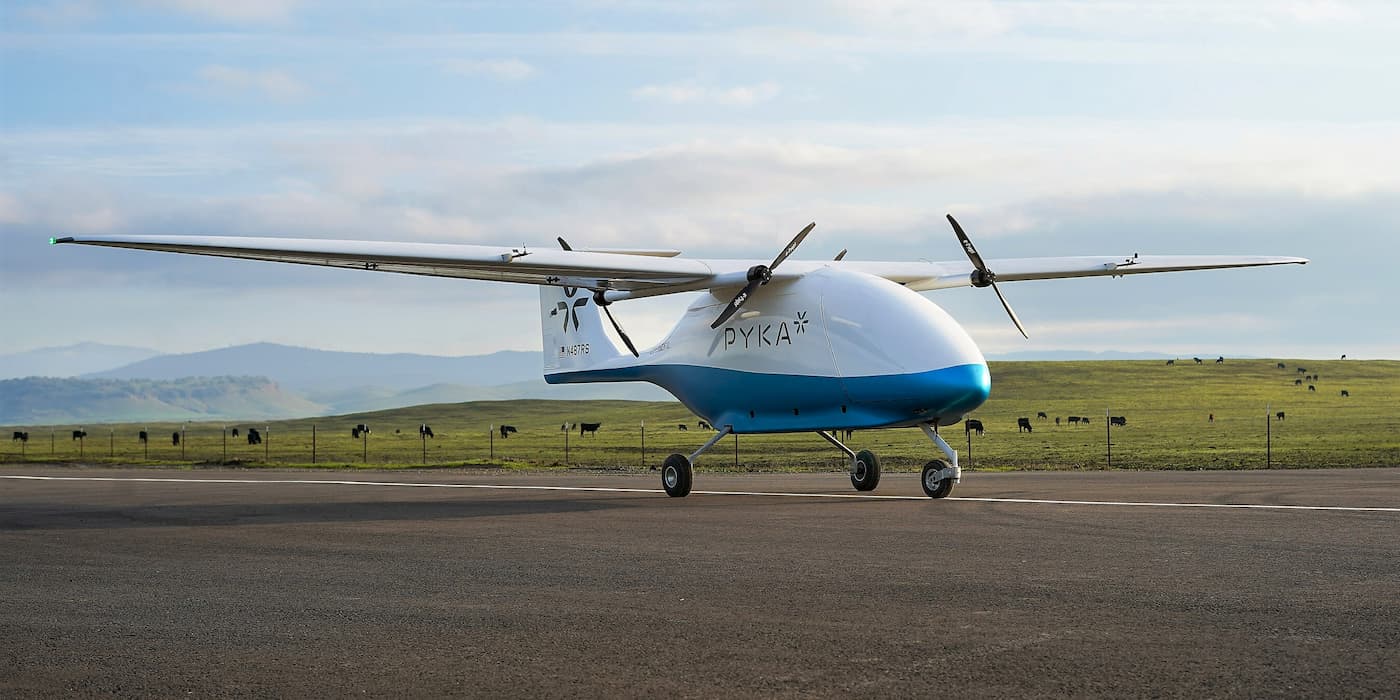World’s largest electric cargo plane unveiled, here’s how far it can fly on its own

A new zero-emission autonomous electric cargo plane was unveiled Monday that could be a game changer in the shipping industry. The electric plane is the largest zero-emission cargo aircraft, featuring “unprecedented payload and range capabilities.”
The post World’s largest electric cargo plane unveiled, here’s how far it can fly on its own appeared first on Electrek.
A new zero-emission autonomous electric cargo plane was unveiled Monday that could be a game changer in the shipping industry. The electric plane is the largest zero-emission cargo aircraft, featuring “unprecedented payload and range capabilities.”
Founded in 2017 in CEO Michael Norcia’s parent’s garage, Pyka is now a leader in electric unmanned aerial vehicle (UAV) technology.
Initially, the focus was on crop spraying rather than cargo, with fewer regulations and hurdles to clear. After raising a $3 million round in March 2018 from Y Combinator, a tech startup accelerator, Pyka set up to design and build its first product, the “Egret.”
By May 2019, Pyka certified the Egret for commercial operation with the New Zealand Civil Aviation Authority, making it the first human-scale electric aircraft for commercial work.
Shortly after raising another $8 million in funding, the company flew its second-generation electric crop sprayer, the “Pelican.” The Pelican would soon go to work spraying bananas for major customers in Costa Rica.
In July 2021, Pyka’s Pelican was the first autonomous fixed-wing aerial to spray over a banana crop field. The young aviation company is now making history again, introducing its Pelican Cargo, the world’s largest autonomous electric cargo plane.
Pyka reveals the largest autonomous electric cargo plane
Pyka, gave us a glimpse into what the future could look like with its Pelican Cargo. The purpose-built industrial aircraft is the largest zero-emission cargo airplane and the first autonomous vehicle in its class.
The company believes that electrification and automation will make aviation safer while reducing CO2 emissions, as Norcia explains:
Pelican Cargo will have a significant positive impact on people’s lives. We designed this plane to eliminate C02 emissions from the logistics chain, while offering a significant speed advantage over ground transportation and operating costs at a fraction of conventional air transportation.
The Pelican Cargo will feature a range of up to 200 miles (with a 20 min reserve) and a payload of up to 400 lbs in 66 feet of cargo space. With a sliding cargo tray, loading can be done in five minutes.
The electric airplane features four electric motors, 100 kW combined power, and a 50 kWh lithium-ion swappable battery. As for charging, you can either swap batteries (a five-minute process) or recharge in around one hour – added GPS and Laser/Radar based navigation allow for night flying.
Pyka says it has secured pre-commitments of over 80 orders and options for its electric cargo plane from three customers. The company is rigorously testing the aircraft at Pyka’s test facility in Northern California, with its first commercial operation expected in the second half of the year.
One of Pyka’s customers, Alex Brown of Skysports Drone Services, had high praise for the electric aircraft, saying:
Welcoming the Pelican Cargo aircraft into our fleet will enable us to continue on our mission of solving complex logistical and operational challenges with tailored drone services. We know a thing or two about drones and in our eyes, the Pelican Cargo is the most advanced product in its payload class on the market.
Electrek’s Take
Pyka is on a mission to make aviation safer, more affordable, and more accessible than ever with its autonomous electric aircraft.
By going electric, customers can save on volatile fuel costs. Not to mention the money saved without requiring a crew to operate it (only one safety monitor is needed). Fewer expenses and labor costs can result in additional trips per day and less waiting time between deliveries, saving both businesses and customers in the long run.
Perhaps, the most important aspect is the CO2 emissions that could be saved with this technology. Air transport generated 915 million tonnes of CO2 in 2019, and the trend is expected to continue rising rapidly as people’s buying habits move online.
The International Air Transport Association (IATA) has already committed to achieving net zero carbon by 2050. Although the majority of CO2 emissions in commercial aviation is from passenger transport, starting with short-distance freight transport will help make an immediate impact while laying the groundwork for fully electric (autonomous?) passenger flights in the future.
FTC: We use income earning auto affiliate links. More.




